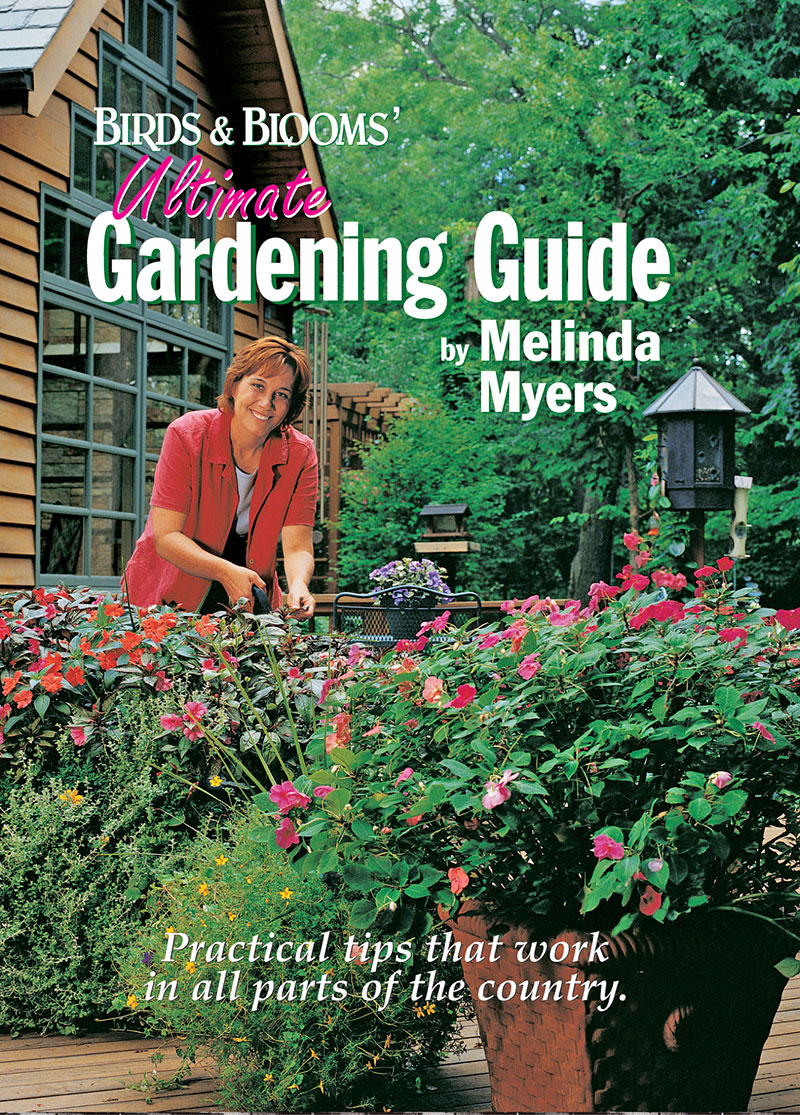
April
Flowers & Ornamental Grasses
Flowers & Ornamental Grasses
- Remove any remaining winter mulch as your plants begin to grow and the weather consistently hovers near freezing.
- Remove any stems and seedpods left standing for winter interest. Stack out of sight to allow any hibernating pollinators and beneficial insects a chance to exit. Then chop and compost in mid summer.
- Reduce season long care by removing weeds as soon as they appear.
- Take a soil test in new and struggling gardens as soon as the snow melts and soil thaws.
- Begin soil preparation when soil is slightly moist, but not wet to avoid damaging soil.
- Incorporate a low nitrogen, slow release fertilizer, like Milorganite, into the soil prior to planting. This provides the nutrients your plants need for the first few months of the growing season.
- Prune Russian sage back to 4 to 6 inches above the soil.
- Move dormant container gardens out of winter storage when the temperatures consistently hover around freezing.
- Divide overgrown and floppy summer and fall blooming perennials as shoots emerge from the soil.
- Mark the location of late emerging perennials, like butterfly weed and hardy hibiscus, to avoid damaging or accidently weeding them out.
- Spread several inches of compost over the soil surface of existing perennial gardens every two to three years. Lightly rake the compost into the soil surface.
- Those in colder climates can finish planting tender bulbs, such as dahlias, caladiums, cannas, and elephant ears indoors for earlier flowering and foliage outdoors this summer.
- Start zinnias, marigolds, calendula and cockscomb indoors in early April in colder climates.
- Plant field grown or bare root trees, shrubs and perennials as soon as plants are available.
- Plant pansies, dusty miller, snapdragons and other cool season annuals outdoors when they are available at the local garden center.
- Harden off transplants before moving them to their permanent spot in the garden.
- Those in milder climates can plant cleome and gloriosa daisy seeds two weeks before the last frost. Wait for the danger of frost to pass and soil to warm to plant cosmos, gomphrena, marigold, portulaca, sunflower, zinnia and other warm season flowers seeds.
- Thin out and compost or move excess volunteer seedlings to new garden beds.
- Deadhead faded flowers on early bloomers like snapdragons to encourage another flush of flowers.
- Those in milder climates can begin planting gladiolus corms mid spring through mid July for continuous bloom.
- Pinch mums and asters back to 6 inches now through early July. Remove the top few inches of bee balm, autumn joy sedum, Joe-pye weed and other late summer and fall bloomers that tend to flop when gardening in milder climates.
- Divide overgrown thyme, chives and tarragon when new growth emerges.
- Put plant supports in place as perennials that require staking emerge from the ground to prevent them from flopping.
- Remove brown buds that fail to open and other botrytis blight damage on peonies and roses.
- Monitor and manage insect pests when populations are small for more effective control.
- Continue monitoring for and protecting plants from animal damage. Tender spring growth makes good meals for rabbits and deer.
Fruits, Vegetables & Herbs
Fruits, Vegetables & Herbs
- Test the soil when creating new gardens, managing struggling planting beds or rejuvenating older plantings.
- Start new garden beds or prepare existing gardens when the soil is moist, but not wet to avoid damaging the soil.
- Remove any remaining mulch from strawberries, tender perennials and bulbs as temperatures hover around freezing or the covered plants begin to grow.
- Move above ground planters out of winter storage. Wait for the temperatures to hover around freezing if the plants have begun to grow.
- Remove dead stems and shape lavender, sage and thyme plants as needed. Those in colder climates may need to wait for new growth to begin.
- Begin weeding as soon as they appear. Young weeds are easier to pull.
- Colder climate gardeners can sow tomato, pepper and eggplant seeds indoors according to seed packet directions.
- Midwest gardeners can begin planting broccoli, Brussels sprouts and other cool season transplants in the garden.
- Those in milder climates can plant tomato, pepper, eggplant, melon, and summer squash in the garden after the last freeze and night temperatures remain in the 50’s.
- Harden off transplants before moving them to their permanent spot in the garden.
- Protect transplants from cutworm damage.
- Gardeners in colder regions can sow seeds of beets, carrots, chard, kohlrabi, greens, onion sets, parsnips, peas, radishes, spinach, turnips and other cool season crops directly in the garden.
- Thin plantings of beets, carrots, Swiss chard and turnips. Enjoy the harvested greens while leaving sufficient space for the remaining plants to reach full size.
- Southern gardeners can plant beans, corn, cucumber and southern pea seeds directly in the garden after the danger of frost has passed and soil has warmed.
- Plant asparagus roots and rhubarb divisions or plants in properly prepared soil.
- Fertilize existing asparagus and rhubarb plantings as needed with a low nitrogen, slow release fertilizer like Milorganite.
- Apply fertilizer to young garlic plants when 6 inches tall.
- Start planting earlier with the help of new and old season-extending techniques. Cloches, hot caps, cold frames and floating row covers protect young transplants from spring frosts.
- Harvest established asparagus plantings when spears are 6 to 8 inches long for a total of six to eight weeks.
- Pull or cut the leafstalks from established rhubarb plants when 12 to 15 inches tall, thick and crisp for eight to ten weeks. Remove the wide leaf (its toxic) and only use the stalk.
- Remove and destroy adult and immature (larvae) Mexican bean beetles when found in southern gardens.
- Flea beetles attack a variety of young vegetable plants. Healthy plants usually outgrow the damage.
- Continue monitoring for and protecting plants from animal damage. Tender spring growth makes good meals for rabbits and deer.
Groundcovers & Vines
Groundcovers & Vines
- Remove dead and damaged leaves on groundcovers.
- Finish pruning perennial vines, as needed before growth begins. Wait to prune any spring flowering vines until after they have finished flowering.
- Those in colder climates may want to start annual vines indoors for earlier flowering in the garden. Those in warmer regions can direct seed once the danger of frost has passed.
Indoor & Holiday Plants
Indoor & Holiday Plants
- Extend the life of your Easter lily and other indoor flowering plants. Display in a cool, bright location out of drafts of hot and cold air and keep the soil slightly moist.
- Lift lily pollen from clothing and tablecloths with sticky tape.
- Move forced Asiatic, Oriental and Easter Lilies outdoors into the garden after the danger of frost has passed.
- Prune poinsettias down to 4 to 6” above the soil if you plan on keeping it throughout the year and forcing it into flower for next Christmas.
- Manage annoying fungus gnats with several weekly applications of organic Mosquito Bits.
- Clip off brown tips of spider plants, dracaenas and prayer plants. Reduce this problem by keeping the soil slightly moist or watering them with rainwater or distilled water.
- Repot orchids that have outgrown their container or the potting mix has decomposed and no longer drains freely.
- Move any remaining potbound houseplants into a container one size larger than the current pot.
- Divide overgrown plants and repot the divisions into containers slightly larger than their rootball.
- Fertilize houseplants in need of a nutrient boost or to promote more rapid growth.
- Wait until night temperatures stay above 60° F to move houseplants outdoors for the summer.
Lawns
Lawns
- Take a soil test when starting new lawns or from areas where grass is not performing well.
- Rake out any dead grass patches and tamp down vole trails in the lawn. Wait for grass roots to resprout and the surrounding grass to fill in these areas.
- Replant bare spots in warm season lawns with seed or sprigs when average daytime temperatures stay above 60 degrees.
- Reseed bare areas in cool season lawns in late April or early May. Or cover with sod as soon as it is available to purchase.
- Start mowing as soon as the grass greens up and starts growing. Mow high and often, leaving short grass clippings on the lawn.
- Aerate warm season lawns for compaction if needed.
- If needed, control crabgrass in cool season lawns when the lilac flower buds begin to swell and vanhouette (bridal wreath) spirea start to bloom. Do not treat lawns you plan to overseed this spring.
- Start monitoring for lawn diseases and continue throughout the growing season.
Trees, Shrubs & Roses
Trees, Shrubs & Roses
- Transplant trees and shrubs that need to be moved through early spring before growth begins.
- Plant field grown or bare root trees and shrubs as soon as plants are available. Continue planting balled-and-burlapped and container plants throughout the growing season.
- Move trees and shrubs growing in above-ground planters out of winter storage.
- Consider using edible plants such as blueberries, raspberries and honeyberries in place of strictly ornamental shrubs.
- Repair damaged central leaders on pines, spruces, and firs. Train one of the topmost shoots as the new leader.
- Protect new plantings from animal damage with barriers or repellents like Plantskydd.
- Keep lawn mowers and weed whips away from tree trunks by mulching or planting groundcovers under tree canopies.
- Southern gardeners can prune spring flowering shrubs, as needed, after their blossoms fade.
- Prune roses based on the type of rose and amount of winter damage.
- Remove any suckers that sprout from the rootstock on grafted roses.
- Fertilize palms growing in the landscape with a slow release fertilizer.
- Remove and destroy the caterpillar filled webby nests of Eastern tent caterpillar on wild cherry, apple, crabapples, birches and a few other ornamental trees.
- Prune out or smash colonies of European pine sawflies on mugo and other pines.
- Remove both green and black knobby black knot cankers on ornamental and edible plums, cherries and their relatives.
- Watch for and control aphids as needed if gardening in warmer climates.
- Celebrate Arbor Day the last Friday of the month. Plant new trees, care for existing trees or have a family picnic under your favorite tree.
Categories
Upcoming Live Events
& Webinars
April 18, 2024
Be a Waterwise Gardener
Golden Rondelle Theater, Racine, WI
Register now
April 20, 2024
Pruning Hydrangeas and Other Shrubs
Pasquesi Home & Gardens, Lake Bluff, IL
April 27, 2024
Ridges & Rivers Book Festival
Viroqua, WI
April 28, 2024
Flowering Trees and Shrubs
Ebert's Greenhouse Village, Ixonia, WI
May 1, 2024
FREE WEBINAR
Ornamental Fruits and Vegetables
Register now
May 4, 2024
Garden U 2024
New Richmond, WI
Register now
May 9, 2024
FREE WEBINAR
How to Plant Your Rain Garden
Register now
May 11, 2024
Ask The Plant Doctor Q & A
Ebert's Greenhouse Village, Ixonia, WI
May 12, 2024
Ask The Plant Doctor Q & A
Ebert's Greenhouse Village, Ixonia, WI
May 18, 2024
Ask The Plant Doctor Q & A
Ebert's Greenhouse Village, Ixonia, WI
June 1, 2024
Selecting, Planting, Pruning and Caring for Hydrangeas
Ebert's Greenhouse Village, Ixonia, WI
June 5, 2024
FREE WEBINAR
Under-Appreciated Pollinators
Register now
WATCH ON-DEMAND WEBINARS
Learn More










